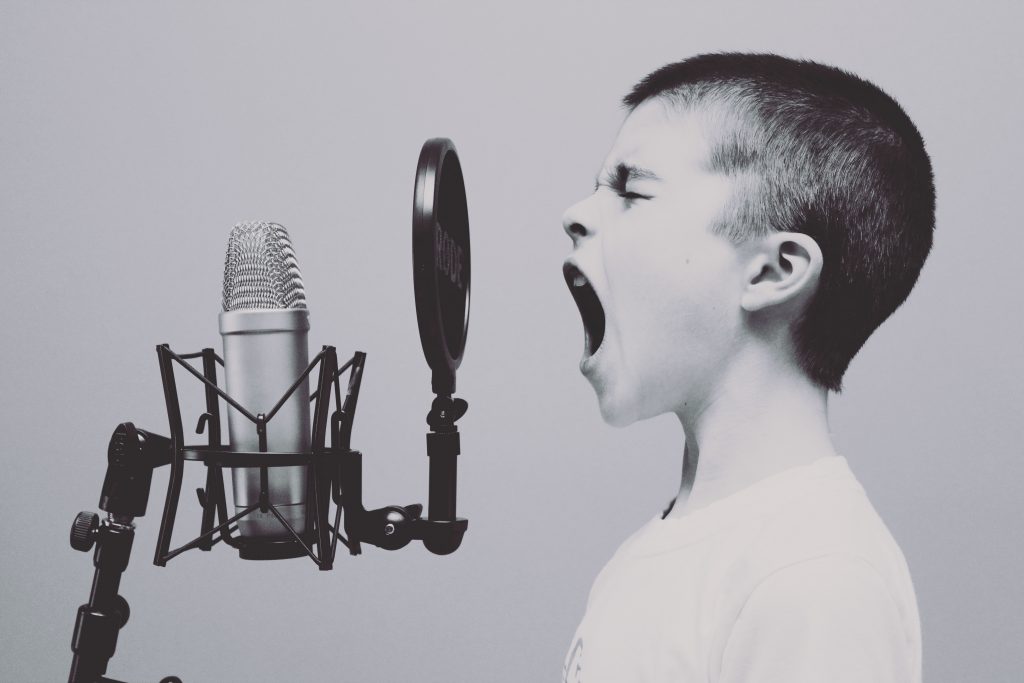
As voice assistants continue to rise in popularity, social media platforms are catching on. Snapchat recently launched new augmented reality (AR) Lenses that respond to your voice, according to The Verge. Similar to saying “Alexa” to activate the Amazon Echo or “Ok Google” to activate Google Assistant, these Lenses require activation words such as “hi” or “wow” to animate.
Some of us may find this new Lens feature very useful while others may prefer the literal hands-on approach. Here are some reasons why you may or may not enjoy Snapchat’s new voice-activated Lenses.
Why You May Enjoy Voice-Activated Lenses?

The Snapchat app sometimes malfunctions when I try to select a Lens with my finger. Whether the issue is my phone’s screen or the app, being unable to use the Lens becomes frustrating. If you also experienced this struggle, you will enjoy the voice-activated Lenses. As long as the word is simple, like “okay” or “use,” this new capability can be very useful.
Voice-activated Lenses are also useful if you want to hold your phone with both hands. Balancing your phone in one hand while touching the screen with the other may fill you with anxiety: you would hate to drop your phone and crack your expensive iPhone’s screen. If you’re worried about your phone’s safety, then the voice-activation feature will certainly come in handy for you.
You will also likely love the voice-activated Lenses if you’re already accustomed to using voice assistants. You may already be used to giving voice commands to Alexa or Google to find out tomorrow’s weather forecast, set a timer, or learn how to spell “Supercalifragilisticexpialidocious.” If this is the case, using your voice to animate Lenses will be a seamless, comfortable, and familiar experience.
Voice-activated Lenses aren’t for everyone, of course. If the above reasons to enjoy them don’t apply to you, read on.
Why You May Not Enjoy Voice-Activated Lenses?

I don’t typically like to draw attention to myself when taking a Snap. Because I’m self-conscious, I often want to capture the moment inconspicuously. For this reason, I would not want to regularly use Snapchat’s voice-activated Lense, especially in public. Drawing attention to myself while taking a Snap causes me to stiffen and act awkwardly in front of the camera. If I were taking a cute selfie while out for a walk, I would smile less genuinely for the camera if I noticed people staring at me as I posed for the picture.
Additionally, voice activation may disrupt a quiet scene I want to capture. For example, if I wanted to add a Lense to an alley cat I spotted downtown, using my voice to activate one of the Lenses may startle the cat and cause it to scamper away.
Whether or not you enjoy using Snapchat’s new voice-activated Lenses is a personal preference. Admittedly, however, there are potential benefits for marketers that like to use the platform.
Marketing Benefits of Voice-Activated Lenses

You will be able to combine compelling visuals with engaging sound when creating Sponsored Lenses. This capability encourages users to interact with your Lens, increasing their memory retention of your brand or message. It also allows you to create something unique to generate interest.
Additionally, although the words that can currently be used to trigger Lens animation are very simplistic, there’s the possibility of further enhancements. For example, Snap may eventually expand the feature to include phrases rather than just one-worded triggers. There is also the possibility that Snap will incorporate a voice assistant within its app, allowing users to search for anything related to your brand by using their voice.
Voice has become a factor of interest in social media marketing. Back in March, for example, code was discovered that forecasted voice calling for Instagram Direct. It’s not surprising that voice is a preoccupation for marketers since it opens a new type of advertising. Data has shown that certain factors will influence voice assistant owners to listen to ads. Primary factors include personalization (i.e. ads customized for each individual owner) and the ability to choose whether or not to listen to an ad. Snapchat exploring voice options for its Lenses is perfectly viable; it’s just getting its feet wet.
Do You Say “Snapchat” or “Instagram”?

Since Snapchat and Instagram are both exploring voice commands in their apps, we can surely expect more to come. They already compete in every other way: IGTV versus Snapchat Discover, Instagram Stories versus Snapchat Stories, and Instagram Location Stickers versus Snapchat Nearby Businesses Geofilter. Which will do it better? The answer may primarily rely on platform preference, or it may come down to user-friendliness. Most likely, however, it will all depend on which platform can most quickly and effectively answer the following question: can you hear me now?
